There is a mind and purpose behind the universe. There are hints of that divine presence in how abstract mathematics can penetrate the universe's secrets, which suggests that a rational mind created the world. Nature is fined tuned to allow life and conscio usness to emerge. John Polkinghorne, British Physicist 84
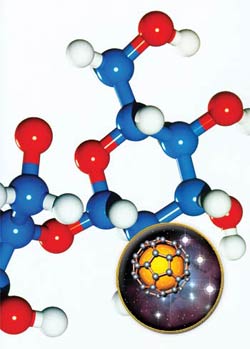 |
Up to this point we have been examining how all the physical balances of the universe in which we live have been specially created so that we can live. We have seen how the general structure of this universe, the location of Earth in it, and factors such as air, light, and water have been precisely created to have exactly the attributes we require. In addition to all this however, we also need to take a look at the elements that make up our bodies. These chemical elements, the building-blocks from which our hands, eyes, hair, and organs as well as all the living things–plants and animals–that are our sources of food have been specially created to serve the exact purposes that they do.
The most important of these building-blocks is carbon.
In previous chapters we described the extraordinary process by which carbon, the element that occupies the sixth position in the periodic table, was produced in the hearts of the huge stars called "red giants". We also saw how, having discovered this wonderful process, Fred Hoyle was moved to say that "the laws of nuclear physics have been deliberately designed with regard to the consequences they produce inside the stars."85
When we examine carbon more closely, we can see that not just the physical formation of this element but also its chemical properties were arranged to be what they are.
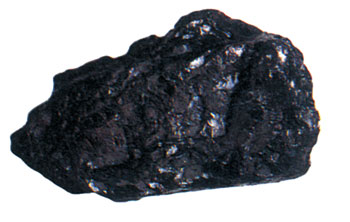 |
One natural form of pure carbon is graphite. This element however is able to form an extraordinary range of different substances when it combines with the atoms of other elements. The main structure of the human body is the result of the different chemical bonds that carbon is capable of entering into. |
Pure carbon occurs naturally in two forms: graphite and diamonds. Carbon however also enters into compounds with many other elements and the result is many different kinds of substances. In particular, the incredibly varied range of organic materials of life–the membrane of a cell and the bark of a tree, the lens of an eye and the horn of a deer, the white of an egg and the poison
of a snake–are all made up of carbon-based compounds. Carbon, combined with hydrogen, oxygen, and nitrogen in many different quantities and geometric arrangements, results in a vast assortment of materials with vastly different properties.
Some carbon compounds' molecules consist of just a few atoms; others contain thousands or even millions. Furthermore, no other element is as versatile as carbon is in forming molecules with such durability and stability. To quote David Burnie in his book Life:
Carbon is a very unusual element. Without the presence of carbon and its unusual properties, it is unlikely that there would be life on Earth.86
Concerning carbon, the British chemist Nevil Sidgwick writes in Chemical Elements and their Compounds:
Carbon is unique among the elements in the number and variety of the compounds which it can form. Over a quarter of a million have already been isolated and described, but this gives a very imperfect idea of its powers, since it is the basis of all forms of living matter.87
For reasons of both physics and chemistry, it is impossible for life to be based on any element other than carbon. At one time, silicon was proposed as another element on which life might be based. We now know however that this conjecture is impossible. To quote Sidgwick again:
We know enough now to be sure that the idea of a world in which silicon should take the place of carbon as the basis of life is impossible…88
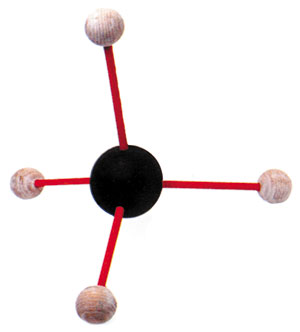 |
| The structure of methane: Four hydrogen atoms share one electron each with a single carbon atom. |
The chemical bonds that carbon enters into when forming organic compounds are called "covalent bonds". A covalent bond is said to occur when two atoms share their electrons.
The electrons of an atom occupy specific orbital shells that are centered around the nucleus. The orbit closest to the nucleus can be occupied by no more than two electrons. In the next orbit a maximum of eight electrons is possible. In the third orbit, there can be up to eighteen. The number of electrons continues to increase with the addition of more orbits. Now an interesting aspect of this scheme is that atoms seem to "want" to complete the number of electrons in their orbital shells. Oxygen, for example, has six electrons in its second (and outermost) orbit, and this makes it "eager" to enter into combinations with other atoms that will supply the two more electrons that are needed to increase this number to eight. (Why atoms behave this way is a question that is unanswered. But it's a good thing they do: because if they didn't, life wouldn't be possible.)
Covalent bonds are the result of this tendency of atoms to complete their orbital shells. Two or more atoms can often make up the shortfall in their orbits by sharing electrons with one another. A good example is the water molecule (H2O), whose building-blocks (two hydrogen atoms and one oxygen atom) form a covalent bond. In this compound, oxygen completes the number of electrons in its second orbit to eight by sharing the two electrons (one each) in the orbital shells of the two hydrogen atoms; in the same way, the hydrogen atoms each "borrow" one electron from oxygen to complete their own shells.
Carbon is very good at forming covalent bonds with other atoms (including carbon atoms) from which an enormous number of different compounds can be made. One of the simplest of these compounds is methane: a common gas that is formed from the covalent bonding of four hydrogen atoms and one carbon atom. With only six electrons, carbon's outer orbital shell is short of the eight that it needs by four, rather than two as is the case with oxygen, and for this reason, four hydrogen atoms are needed to complete it.
We said that carbon was especially versatile in forming bonds with other atoms and this versatility makes an enormous number of different compounds possible. The class of compounds formed exclusively from carbon and hydrogen are called "hydrocarbons". This is a huge family of compounds that includes natural gas, liquid petroleum, kerosene, and lubricating oils. Hydrocarbons like ethylene and propylene are the "bedrock" on which the modern petrochemical industry has been erected. Hydrocarbons like benzene, toluene, and turpentine are familiar to anyone who's worked with paints. The naphthalene that protects our clothes from moths is another hydrocarbon. With the addition of chlorine in their composition, some hydrocarbons become anesthetics; with the addition of fluorine, we have Freon, a gas that is widely used in refrigeration.
There is another important class of compounds in which carbon, hydrogen, and oxygen form covalent bonds with one another. In this family we find alcohols like ethanol and propanol, ketones, aldehydes, and fatty acids among many, many other substances. Another group of compounds composed of carbon, hydrogen, and oxygen are sugars, including glucose and fructose.
The cellulose that makes up the skeleton of wood and the raw material for paper is a carbohydrate. So is vinegar. So is beeswax and formic acid. Each one of the incredibly rich panoply of substances and materials that occur naturally in our world is "nothing more" than a different arrangement of carbon, hydrogen, and oxygen linked together by covalent bonds.
When carbon, hydrogen, oxygen, and nitrogen form such bonds, the result is a class of molecules that is the foundation and structure of life itself: the amino acids that make up proteins. The nucleotides that make up DNA are also molecules formed from carbon, hydrogen, oxygen, and nitrogen.
In short, the covalent bonds that the carbon atom is capable of entering into are vital for the existence of life. Were hydrogen, carbon, nitrogen, and oxygen not so "eager" to share electrons with one another, life would indeed be impossible.
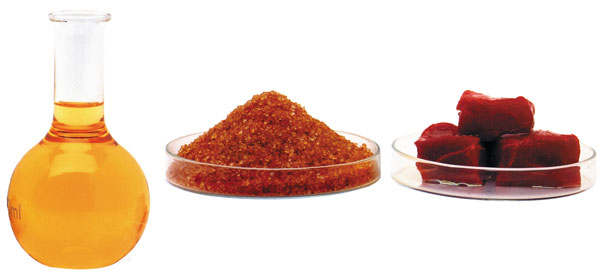 |
| Olive oil, meat, and brown sugar: Everything we eat is made up of different arrangements of hydrogen, oxygen, and carbon with the addition of other atoms such as nitrogen. |
The thing that makes it possible for carbon to form these bonds is a property that chemists call "metastability", the characteristic of having only a slight margin of stability. The biochemist J. B. S. Haldane describes metastability thus:
A metastable molecule means one that can liberate free energy by a transformation, but is stable enough to last a long time unless it is activated by heat, radiation, or union with a catalyst.89
What this somewhat technical definition means is that carbon has a rather unique structure, as a result of which, it is quite easy for it to enter into covalent bonds under normal conditions.
But it is precisely here that the situation starts to become curious because carbon is metastable only within a very narrow range of temperatures. Specifically, carbon compounds become very unstable when the temperature goes over 100°C.
Water and Methane: |
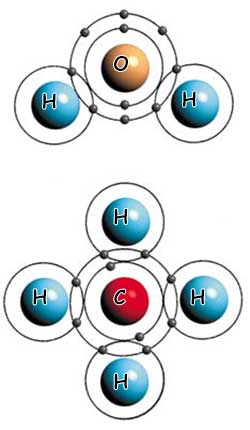 |
| In the water molecule (above), there is a covalent bond between the two hydrogen atoms and the one oxygen atom. In the methane molecule below, four hydrogen atoms form covalent bonds with a single carbon atom. |
This fact is so commonplace in our everyday lives that most of us take it for granted. When we cook meat for example, what we're really doing is changing the structure of its carbon compounds. But there's a point here that we should note: The cooked meat has become completely "dead"; that is, its chemical structure is different from what it had when it was part of a living organism. Indeed most carbon compounds become "denatured" at temperatures above 100°C: the majority of vitamins for example simply fall apart at that temperature; sugars also undergo structural changes and lose some of their nutritional value; and at around 150°C, carbon compounds will start to burn.
In other words, if carbon atoms are to enter into covalent bonds with other atoms and if the resulting compounds are to remain stable, the ambient temperature must not go over 100°C. The lower boundary on the other hand is around 0°C: if the temperature drops too much below that, organic biochemistry becomes impossible.
In the case of other compounds, this is generally not the situation. Most inorganic compounds are not metastable; that is, their stability is not greatly affected by changes in temperature. To see this let's do an experiment. Stick a piece of meat on the end of a long, thin piece of metal such as iron and heat the two together over a fire. As the temperature grows hotter, the meat will darken and eventually burn long before much of anything happens to the metal. The same thing would be true if you substituted stone or glass for metal. You would have to increase the heat by many hundreds of degrees before the structures of such materials began to change.
By now you certainly will have spotted the similarity between the temperature range that is necessary for carbon compounds' covalent bonds to be established and remain stable and the range of temperatures that prevails on our planet. As we have said elsewhere, in the whole universe, temperatures range from the millions of degrees in the hearts of stars to absolute zero (-273.15°C). But Earth, having been created for humanity to live in, possesses the narrow temperature range essential for the formation of the carbon compounds that are the building-blocks of life.
But the curious "coincidences" do not end here. The same temperature interval is the only one in which water remains liquid. As we saw in the earlier chapter, liquid water is one of the basic requirements of life and, in order to remain liquid, it requires precisely the same temperatures that carbon compounds need to form and be stable. There is no physical or natural "law" dictating that this should be so and under the circumstances, this situation is evidence that the physical properties of water and carbon and the conditions of the planet Earth were created so as to be in harmony with one another.
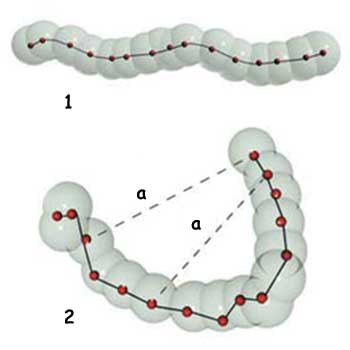 |
| 1. Covalent bonds: The atoms are strongly linked to one another 2. Weak bonds: An organic compound is maintained in a unique three-dimensional form by means of weak (non-covalent) bonds (the broken lines). |
| a. Weak bond |
Covalent bonds are not the only type of chemical bonding that keeps the compounds of life stable. There is another and different category of bond known as "weak bonds".
Such bonds are about twenty times weaker than covalent bonds, hence their name; but they are no less crucial to the processes of organic chemistry. It is due to this weak bonding that the proteins that make up the building-blocks of living things are able to maintain their complex and vitally important three-dimensional structures.
To explain this, we have to talk briefly about the structure of proteins. Proteins are usually referred to as a "chain" of amino acids. While this metaphor is essentially correct, it is also incomplete. It's incomplete because for most people a "chain of amino acids" conjures up the mental image of something like a string of pearls whereas the amino acids that make up proteins have a three-dimensional structure more like a tree with leafy branches.
Covalent bonds are what hold the atoms of amino acids together. Weak bonds are what maintain the essential three-dimensional structure of those acids. No proteins could exist without these weak bonds. And of course without proteins, there could be no life.
Now the interesting part of this business is that the temperature range in which weak bonds are able to perform their function is the same as the one prevailing on Earth. This is rather odd because the physical and chemical natures of covalent bonds versus weak bonds are entirely different things and independent of one another. In other words, there's no intrinsic reason why they should both require the same temperature range. And yet they do: Both types of bonds can only be formed and remain stable within this narrow temperature range. And if they did not–if covalent bonds required a range of temperatures wildly different from that of weak bonds, say–then it would be impossible to construct the complex three-dimensional structures that proteins require.
Everything that we have seen concerning the extraordinary chemical properties of the carbon atom shows that there is an enormous harmony existing among this element that is the fundamental building-block of life, the water that is also vital for life, and the planet Earth that is the shelter for that life. In Nature's Destiny, Michael Denton underscores this fitness when he says:
Out of the enormous range of temperatures in the cosmos, there is only one tiny temperature band in which we have (1) liquid water, (2) a great plenitude of metastable organic compounds, and (3) weak bonds for stabilizing the 3-D forms of complex molecules.90
Among all the heavenly bodies that have ever been observed, this "tiny temperature band" exists only on Earth. Moreover it is only on Earth that the two fundamental building-blocks of life–carbon and water–are to be found in such generous supply.
What all this indicates is that the carbon atom and its extraordinary properties were specially created for life and that our planet was specially created to be a home for carbon-based life-forms.
We have seen how carbon is the most important building-block of living organisms and how it was specially created so as to fulfill that function. The existence of all carbon-based life-forms however is contingent upon a second imperative: energy. Energy is an indispensable requirement for life.
Green plants get their energy from the Sun through the process of photosynthesis. For the rest of the living creatures of Earth–and that includes us–the only source of energy is a process called "oxidation"–a fancy word for "burning". The energy of oxygen-breathing organisms is derived from burning the nourishment that they get from plants and animals. As you may guess from the term "oxidation", this burning is a chemical reaction in which substances are oxidized–that is, they are combined with oxygen. This is why oxygen is as vitally important to life as are carbon and hydrogen.
A generalized formula for "burning" (oxidation) looks like this:
Carbon compound + oxygen > water + carbon dioxide + energy
What this means is that when carbon compounds and oxygen are combined (under the proper conditions of course) a reaction takes place that generates water and carbon dioxide and releases a considerable amount of energy. This reaction takes place most readily in hydrocarbons (compounds of hydrogen and carbon). Glucose (a sugar and also a hydrocarbon) is what is constantly being burned in your body to keep it supplied with energy.
Now as it happens, the elements of hydrogen and carbon that make up hydrocarbons are the ones most suitable for oxidation to take place. Among all other atoms, hydrogen combines with oxygen the most readily and releases the most energy in the process. If you need a fuel to burn in oxygen, you can't do better than hydrogen. From the standpoint of its value as a fuel, carbon ranks third after hydrogen and boron. In The Fitness of the Environment, Lawrence Henderson comments on the extraordinary fitness that is involved here:
The very chemical changes, which for so many other reasons seem to be best fitted to become the processes of physiology, turn out to be the very ones which can divert the greatest flood of energy into the stream of life.91
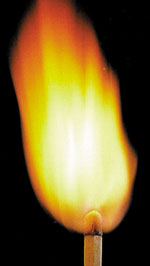 |
As we've just seen, the fundamental reaction that releases the energy necessary for the survival of oxygen-breathing organisms is the oxidation of hydrocarbons. But this simple fact raises a troubling question: If our bodies are made up essentially of hydrocarbons, why aren't they also oxidized? Putting it another way, why don't we just go up in flame, like a match that's been struck?
Our bodies are constantly in contact with the oxygen of the air and yet they don't oxidize: they don't catch fire. Why not?
The reason for this seeming paradox is that, under normal conditions of temperature and pressure, the molecular (O2) form of oxygen has a substantial degree of inertness or "nobility". (In the sense that chemists use the term, "nobility" is the reluctance (or inability) of a substance to enter into chemical reactions with other substances.) But this raises another questions: If molecular oxygen is so "noble" as to avoid incinerating us, how is this same molecule made to enter into chemical reactions inside our bodies?
The answer to this question, which perplexed chemists as early as the mid 19th century, did not become known until the second half of the 20th century, when biochemical researchers discovered the existence of enzymes in the human body whose only function was to force the O2 in the atmosphere to enter into chemical reactions. As a result of a series of extremely complex steps, these enzymes utilize atoms of iron and copper in our bodies as catalysts. A catalyst is a substance that initiates a chemical reaction and allows it to proceed under different conditions (such as lower temperature etc) than would otherwise be possible.92
In other words, there is a very interesting situation here: Oxygen is what supports oxidation and combustion and normally one would expect it to burn us up too. To prevent this, the molecular O2 form of oxygen that exists in the atmosphere has been given a strong element of chemical nobility. That is, it doesn't enter into reactions easily. But, on the other hand, our bodies depend upon the oxidizing property of oxygen for their energy and for that reason, our cells have been fitted out with an extremely complex enzyme system that makes this noble gas extremely reactive.
While we're on the subject we should also point out that this enzyme system is a marvellous example of Creation that no evolutionary theory holding that life developed as a result of chance events can ever hope to explain.93
There is yet another precaution that has been taken to keep our bodies from burning up: what the British chemist Nevil Sidgwick calls the "characteristic inertness of carbon".94 What this means is that carbon is not too much in a hurry either to enter into a reaction with oxygen under normal pressures and temperatures. Expressed in the language of chemistry this may all seem rather arcane, but in fact what is being said here is something that anyone who's ever had to light a fireplace full of huge logs or a coal-burning stove in winter or start a stubborn barbecue in summer already knows. In order to get the fire going, you have to take care of a lot of preliminaries (kindling, starter, etc) or else suddenly raise the temperature of the fuel to a very high degree (as with a blowtorch). But once the fuel starts burning, the carbon in it enters into the reaction with oxygen quite rapidly and a great amount of energy is released. This is why it's so hard to get a fire going without another source of heat. But after combustion begins, a great deal of heat is produced and this can cause other carbon compounds nearby to catch fire as well and so the fire spreads.
When we look into this matter more carefully, we can see that fire itself is a most important example of Creation. The chemical properties of oxygen and carbon have been so arranged that these two elements enter into a reaction with one another (combustion) only when a great amount of heat is already present. It's a good thing, too because if this weren't the case, life on this planet would be very unpleasant if not downright impossible. If oxygen and carbon were even slightly more willing to react with one another, the spontaneous combustion–self-ignition–of people, trees, and animals would become a commonplace event whenever the weather got a little too warm. Someone walking through a desert for example might suddenly burst into flame at noon when the heat was at its most intense; plants and animals would be exposed to the same risk. It is evident that life would not be possible in such an environment.
On the other hand, if carbon and oxygen were slightly more noble (that is, slightly less reactive) than they are, it would be much more difficult to light a fire in this world than it already is: indeed, it might even be impossible. And without fire, we not only would have been unable to keep ourselves warm: it's quite likely that there would never have been any technological progress on our planet because that progress depends upon the ability to work materials such as metal and without the heat provided by fire, purifying and working metal is all but impossible.
What all this shows is that the chemical properties of carbon and oxygen have been arranged so as to be the most suitable for the needs of mankind. Concerning this, Michael Denton says:
This curious unreactivity of the carbon and oxygen atoms at ambient temperatures, combined with the enormous energies inherent in their combination once achieved, is of great adaptive significance to life on Earth. It is this curious combination that not only makes available to advanced life forms the vast energies of oxidation in a controlled and orderly manner but has also made possible the controlled use of fire by mankind and allowed the harnessing of the massive energies of combustion for the development of technology.95
In other words, both carbon and the oxygen have been created with properties that are the most fit for human life. The properties of these two elements allow us to light a fire and to make use of fire in the most convenient way possible. Furthermore, the world is full of sources of carbon (such as the wood of trees) that are fit for combustion. All this is an indication that fire and the materials to start and sustain it have been specially created to be fit for human life. In the Qur'an, Allah speaks to mankind with these words:
He Who produces fire for you from green trees so that you use them to light your fires. (Surah Ya Sin: 80)
The utilization of oxygen by the body is highly dependent upon the property of this gas to dissolve in water. The oxygen that enters our lungs when we inhale is immediately dissolved into the blood. The protein called hemoglobin captures these oxygen molecules and carries them to the other cells of the body where, by means of the special enzyme system described above, the oxygen is used to oxidize carbon compounds called ATP to release their energy.
All complex organisms derive their energy in this way. However the operation of this system is especially dependent upon the solubility of oxygen. If oxygen were not sufficiently soluble, not enough oxygen would enter the bloodstream and cells would not be able to generate the energy they require; if oxygen were too soluble on the other hand, there would be an excess of oxygen in the blood resulting in a condition known as oxygen toxicity.
The difference in the water-solubility of different gases varies by as much as a factor of a million. That is, the most soluble gas is a million times more soluble in water than the least soluble gas is and there are hardly any gases at all whose solubilities are identical. Carbon dioxide is about twenty times more soluble in water than oxygen is for example. Among the vast range of potential solubilities however, the one possessed by oxygen is precisely what it needs to be for it to be fit for human life.
What would happen if the water-solubility rate of oxygen were different: a little more or a little less?
Let us take a look at the first situation. If oxygen were less soluble in water (and thus also in blood) less oxygen would enter the bloodstream and the body's cells would be starved of oxygen. This would make life much more difficult for metabolically active organisms such as human beings. No matter how hard you worked at breathing, you would constantly be faced with the danger of suffocation because not enough oxygen was reaching your body's cells.
If the water-solubility of oxygen were higher on the other hand, you would be confronted by the threat of oxygen toxicity, mentioned briefly above. Oxygen is, in fact, a rather dangerous substance: if an organism gets too much of it, the result can be fatal. Some of the oxygen in the blood enters into a chemical reaction with the blood's water. If the amount of dissolved oxygen becomes too high, the result is the production of highly reactive and damaging by-products. One of the functions of the complex system of blood enzymes is to prevent this from happening. But if the amount of dissolved oxygen becomes too high, the enzymes cannot do their job. As a result, every breath we take would poison us a little bit more leading quickly to death. The chemist Irwin Fridovich comments on this issue:
All respiring organisms are caught in a cruel trap. The very oxygen which supports their lives is toxic to them and they survive precariously, only by virtue of elaborate defense mechanisms.96
What saves us from this trap–from being poisoned by too much oxygen or from being suffocated by not enough of it–is the fact that oxygen's solubility and the body's complex enzymatic system have been created to be what they need to be. To put it more explicitly, Allah has created not only the air we breathe but also the systems that make it possible to use that air in perfect harmony with one another.
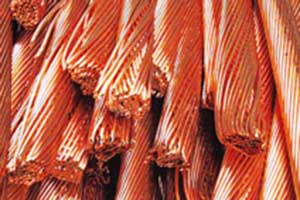 |
| Cooper |
Carbon and oxygen of course are not the only elements that have been specially created to make life possible. Elements like hydrogen and nitrogen, which make up a large part of the bodies of living things, also possess attributes that make life possible. In fact, there appears not to be a single element in the periodic table that does not fulfill some sort of function in support of life.
Periyodik tabloda hidrojenden uranyuma kadar 92 tane element bulunur. (Uranyum sonrası elementler doğada bulunmazlar, çağımızda laboratuvarda üretilmektedirler ve zaten kararlı değildirler.) Bu 92 elementin 25 tanesi, yaşam için doğrudan gereklidir. Bunların 11 tanesi, yani; hidrojen, karbon, oksijen, azot, sodyum, magnezyum, fosfor, kükürt, klor, potasyum ve kalsiyum, canlı organizmaların yaklaşık % 99.9'unu oluşturan temel elementlerdir.
In the basic periodic table there are ninety-two elements ranging from hydrogen (the lightest) to uranium (the heaviest). (There are of course other elements beyond uranium but these do not occur naturally and have all been created under laboratory conditions. None of them are stable.) Of this ninety-two, twenty-five are directly necessary for life and of those, just eleven–hydrogen, carbon, oxygen, nitrogen, sodium, magnesium, phosphorus, sulfur, chlorine, potassium, and calcium–make up some 99% of the body weight of nearly all living things. The other fourteen elements (vanadium, chromium, manganese, iron, cobalt, nickel, copper, zinc, molybdenum, boron, silicon, selenium, fluorine, and iodine) are present in living organisms only in very small amounts but even these have vitally important functions. Three elements–arsenic, tin, and tungsten–are to be found in some living things where they perform functions that are not completely understood. Three more elements–bromine, strontium, and barium–are known to be present in most organisms, but their functions are still a mystery.97
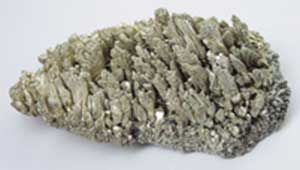 |
| Magnesium |
This broad spectrum encompasses atoms from each of the different series of the periodic table, whose elements are grouped according to the attributes of their atoms. What this indicates is that all of the element groups of the periodic table are necessary, in one way or another, for life. In The Biological Chemistry of the Elements, J. J. R Frausto da Silva and R. J. P Williams have this to say:
The biological elements seem to have been selected from practically all groups and subgroups of the periodic table... and this means that practically all kinds of chemical properties are associated with life processes within the limits imposed by environmental constraints.98
Even the heavy, radioactive elements at the end of the periodic table have been marshaled in the service of human life. In Nature's Destiny, Michael Denton describes in detail the essential role that these radioactive elements, such as uranium, play in the formation of the Earth's geological structure. Naturally occurring radioactivity is closely associated with the fact that the Earth's core is able to retain its heat. That heat is what keeps the core, which consists of iron and nickel, liquid. This liquid core is the source of the Earth's magnetic field which, as we have seen elsewhere, helps shield the planet from dangerous radiation and particles from space while performing other functions as well. Even the inert gases and elements such as the rare-earth metals, none of which seem to be involved in the support of life, are apparently there because of the demands of ensuring that the range of naturally-occurring elements would extend as far as uranium.99
In short, it is safe to say that all the elements whose existence we know of serve some function in human life. Not one of them is either superfluous or purposeless. This situation is further evidence that the universe was created by Allah for mankind.
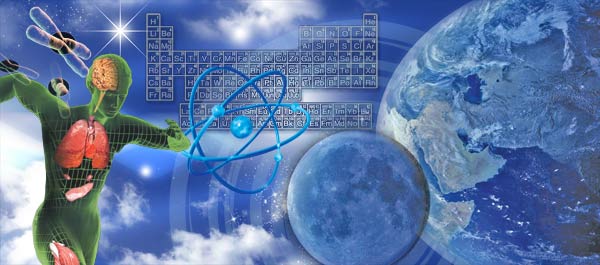 |
| Allah summons us to investigate and reflect upon the heavens, alternation of the night and the day, and the Creation of universe. Science is a method by which we discover the Creation of Allah. |
Every physical and chemical property of the universe that we have examined turns out to be exactly what it needs to be in order for life to exist. And yet in this book we have only scratched the surface of the overwhelming evidence of this fact. No matter how deeply you delve the details or broaden the search, this general observation remains true: In every detail of the universe, there is a purpose that serves human life and each detail is perfectly balancedand harmonized to achieve that purpose.
Certainly this is proof of the existence of a superior creator who brought this universe into being for this purpose. Whatever property of matter we may examine, we behold in it the infinite knowledge, wisdom, and power of Allah, Who created it from nothingness. Every thing bows to His will and that is why each and every thing is in perfect harmony with everything else.
This is the conclusion that 20th-century science has at last reached. And yet, it is only a recognition of a fact that was imparted to mankind in the Qur'an over fourteen centuries ago: Allah has created every detail of the universe to reveal the perfection of His own Creation:
Blessed be He Who has the Kingdom in His Hand! He has power over all things. He Who created death and life to test which of you is best in action. He is the Almighty, the Ever-Forgiving. He Who created the seven heavens in layers. You will not find any flaw in the Creation of the All-Merciful. Look again–do you see any gaps? Then look again and again. Your sight will return to you dazzled and exhausted. (Surat al-Mulk: 1-4)
84. "Science Finds God", Newsweek, 27 July 1998 ![]()
85. Robert E. D. Clark, The Universe: Plan or Accident?, London, Paternoster Press, 1961, p. 98 ![]()
86. Fred Hoyle, Religion and the Scientists, London: SCM, 1959; M. A. Corey, The Natural History of Creation, Maryland: University Press of America, 1995, p. 341 ![]()
87. David Burnie, Life, Eyewitess Science, London: Dorling Kindersley, 1996, p. 8 ![]()
88. Nevil V. Sidgwick, The Chemical Elements and Their Compounds, vol 1. Oxford: Oxford University Press, 1950, p. 490 ![]()
89. Nevil V. Sidgwick, The Chemical Elements and Their Compounds, vol 1., p. 490 ![]()
90. J. B. S. Haldane, "The Origin of Life", New Biology, 1954, vol. 16, p. 12 ![]()
91. Michael Denton, Nature's Destiny, p. 115-116 ![]()
92. Lawrence Henderson, The Fitness of the Environment, Boston: Beacon Press, 1958, p. 247-48 ![]()
93. L. L. Ingraham, "Enzymic Activation of Oxygen", Comprehensive Biochemistry, (ed. M. Florkin, E. H. Stotz), Amsterdam: Elsevier, vol. 14, p. 424 ![]()
94. The question of how the complicated enzyme system enabling oxygen intake by the respiratory system emerged is one of the questions the theory of evolution fails to explain. This system has an irreducible complexity, in other words, the system can not function unless all of its components function perfectly. For this reason, it is unlikely to say that the system developed from the simple form to the more complex, as evolution suggests. Prof. Ali Demirsoy, a biologist from Ankara Hacettepe University and a prominent advocate of the theory of evolution in Turkey, makes the following confession about this subject:
"However, there is a major problem here. Mitochondria use a fixed number of enzymes during the process of breaking (with oxygen). The absence of only one of these enzymes stops the functioning of the whole system. Besides, energy gain with oxygen does not seem to be a system which can proceed step by step. Only the complete system performs its function. That is why, instead of the step by step development to which we have adhered so far as a principle, we feel the urge to embrace the suggestion that, all the enzymes (Krebs enzyme) needed to perform the reactions of the mitochondria entered a cell all at once by coincidence or, were formed in that cell all at once. That is merely because those systems failing to use oxygen fully, in other words, those systems remaining in the intermediate level would disappear as soon as they react with oxygen." (Ali Demirsoy, The Basic Laws of Life: General Zoology, Volume 1, Section 1, Ankara, 1998, p.578)
While the probability of the formation of only one of the enzymes (special proteins) Prof. Demirsoy mentions above, saying "we have to accept that they formed all of a sudden by coincidence" is 1 over 10950, it is certainly unreasonable to put forward that many enzymes of that sort formed by coincidence ![]()
95. Nevil V. Sidgwick, The Chemical Elements and Their Compounds, vol 1. Oxford: Oxford University Press, 1950, p. 490 ![]()
96. Michael Denton, Nature's Destiny, p. 122-123 ![]()
97. Irwin Fridovich, "Oxygen Radicals, Hydrogen Peroxide, and Oxygen Toxicity", Free Radicals in Biology, (ed. W. A. Pryor), New York: Academic Press, 1976, p. 239-240 ![]()
98. J. J. R. Fraústo da Silva, R. J. P. Williams, The Biological Chemistry of the Elements, Oxford: Oxford University Press, p. 3-4 ![]()
99. J. J. R. Fraústo da Silva, R. J. P. Williams, The Biological Chemistry of the Elements, p. 5 ![]()